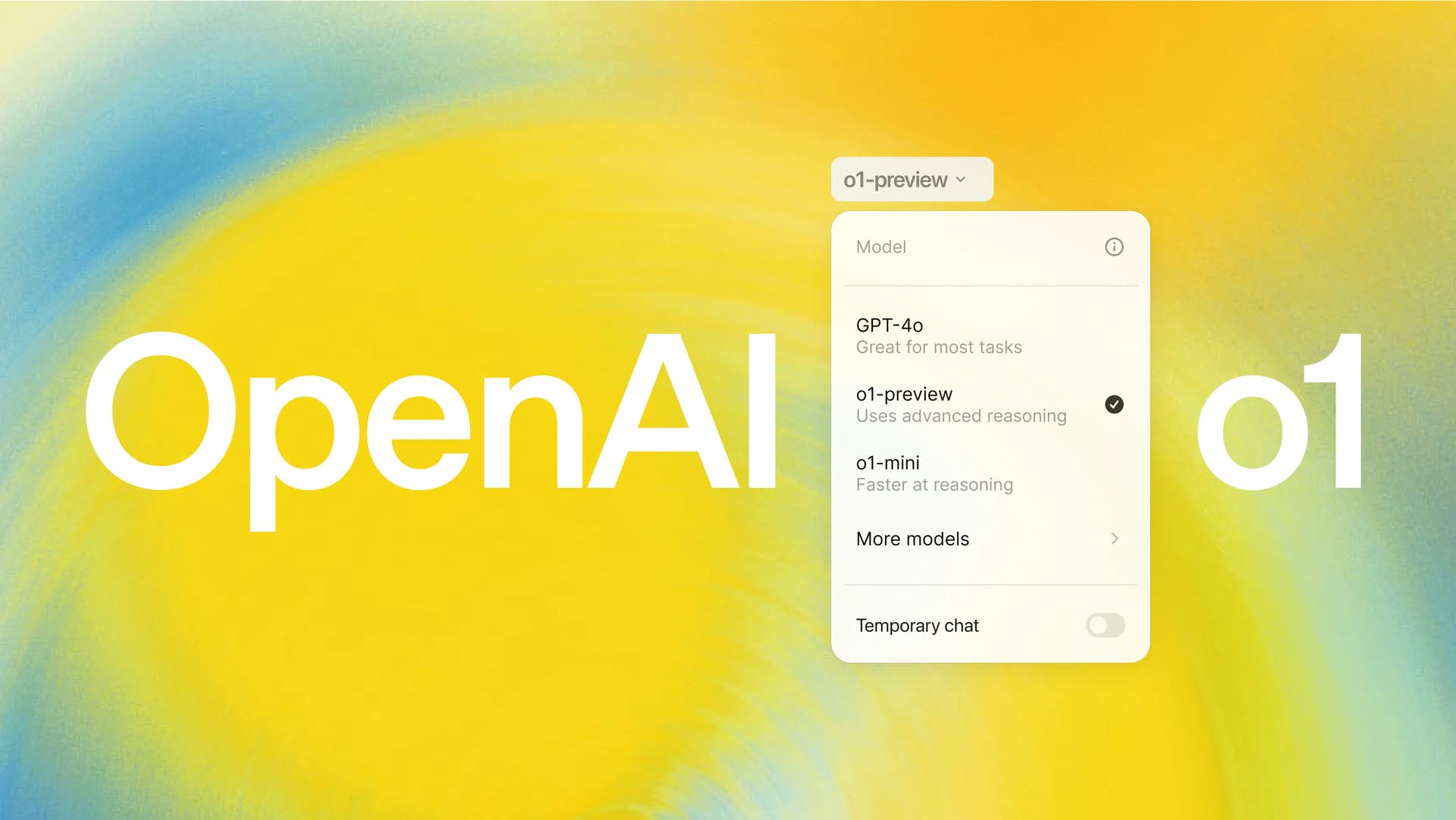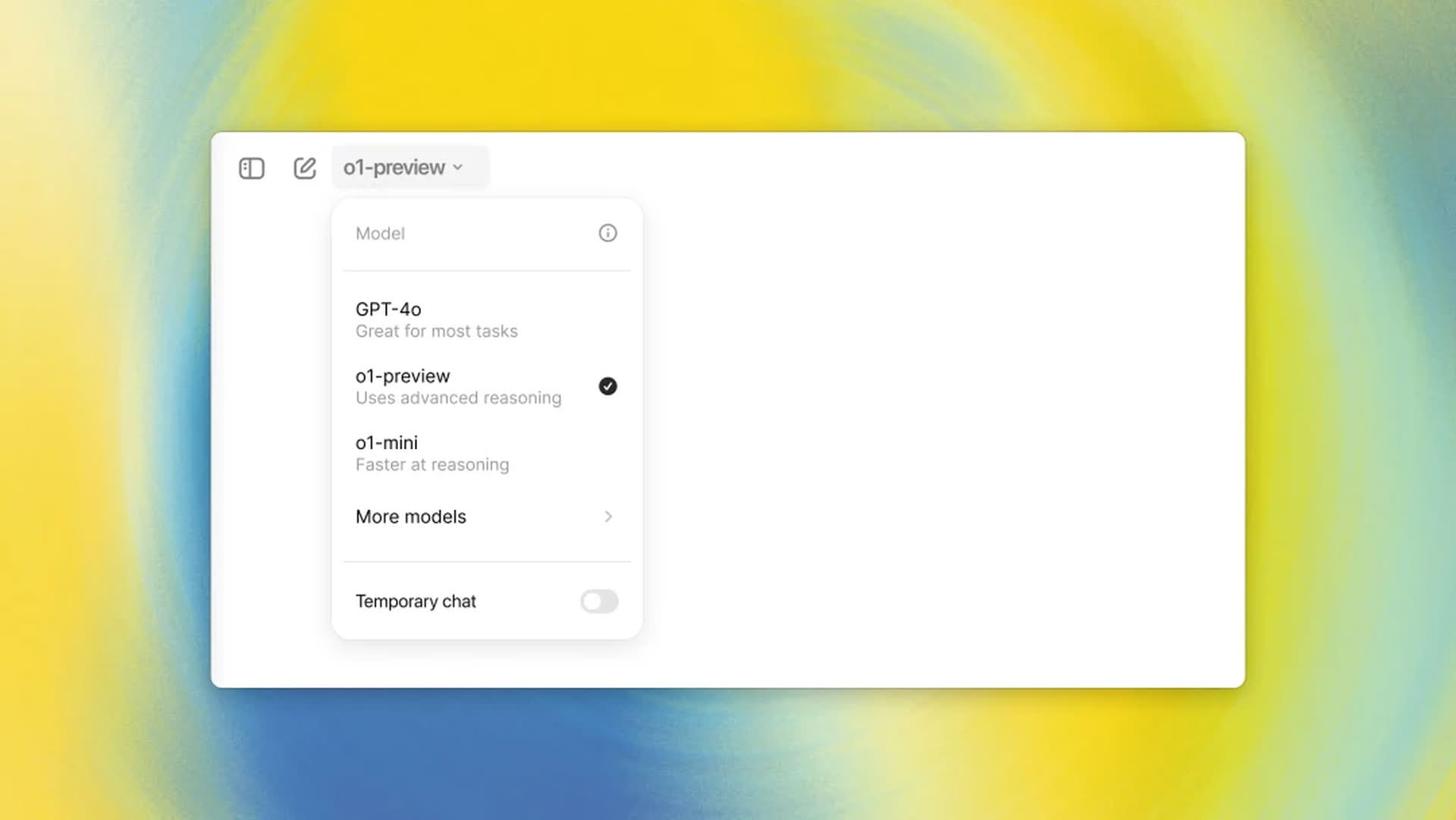OpenAI starts a new era of AI reasoning with ChatGPT o1

Artificial intelligence has taken another massive leap forward with the announcement of OpenAI’s OpenAI o1, its first model equipped with “reasoning” abilities, mentioned in the infamous Strawberry model.
Dubbed as the highly anticipated “Strawberry” model by the AI community, OpenAI o1 comes with enhanced problem-solving capabilities, offering a more advanced approach to understanding and answering multistep questions.
Alongside OpenAI o1, the company has also released ChatGPT o1-mini, a more affordable and smaller version for users who need simpler solutions. This release marks a significant milestone as OpenAI moves closer to its vision of AI systems that can think, reason, and assist in decision-making.
OpenAI ChatGPT o1 is out nowWhat makes OpenAI’s new OpenAI o1 special is its ability to handle complex reasoning, setting it apart from previous iterations such as GPT-4o.
Unlike earlier models that primarily focused on pattern recognition and mimicking training data, o1 uses reinforcement learning to process problems step-by-step. This methodology, often referred to as “chain of thought” reasoning, enables the model to break down complex queries and deliver accurate, structured answers.
One of the most notable aspects of ChatGPT o1 is its ability to explain its reasoning while solving problems. During a demonstration in their blog post, OpenAI’s research team showed how ChatGPT o1 processed a math puzzle step-by-step, providing a solution after 30 seconds of deliberation.
This process mirrors the way humans work through problems, creating a more intuitive and relatable interaction with the AI. However, OpenAI is quick to clarify that while the model appears to “think,” it is not actually conscious or human-like in its cognition. Rather, the interface is designed to give users insight into the model’s complex processing pathways.
OpenAI o1’s strengths and limitationsWhile OpenAI o1 represents a significant advancement, it isn’t perfect. OpenAI admits that, despite the improved reasoning capabilities, the model still struggles with hallucinations, a common problem where AI generates incorrect or misleading information.
As Jerry Tworek, OpenAI’s research lead, explained:
“We can’t say we solved hallucinations”.
Nonetheless, OpenAI o1 is much better at tasks like writing code, solving mathematical problems, and performing well in competitive environments such as Codeforces programming contests.
According to OpenAI, ChatGPT o1 excels in tasks that require complex thought, such as:
- Coding
- Math
- Science problems
In fact, during tests, it solved 83 percent of the problems on a qualifying exam for the International Mathematics Olympiad, a significant improvement over GPT-4o’s 13 percent success rate. These results suggest that o1 is equipped to handle more advanced tasks than its predecessors, even though it doesn’t outperform GPT-4o in areas like general knowledge or language processing.
For a deeper dive into reinforcement learning, check out this research paper on reinforcement learning applications in AI. Autonomous agents and beyondOne of the long-term goals for OpenAI is to build autonomous AI systems, or agents, that can make decisions and take actions on behalf of users. The OpenAI o1 model is seen as a key step in that direction. Unlike current models, which rely on predicting word sequences, future AI agents would have the capacity to execute complex tasks autonomously, from research to problem-solving in fields like medicine and engineering.
Bob McGrew, OpenAI’s chief research officer, emphasized this during the release of ChatGPT o1, stating:
“We have been spending many months working on reasoning because we think this is actually the critical breakthrough”.
McGrew and his team believe that solving reasoning challenges is fundamental to achieving human-like intelligence in AI. The new training methodology behind o1 reflects this focus, as the model has been optimized for tasks that go beyond simple pattern recognition.
For those interested in understanding how reasoning could lead to more advanced AI, McGrew’s research on AI agents offers fascinating insights.
 ChatGPT Plus and Team users can access o1 immediately
ChatGPT o1 pricing
ChatGPT Plus and Team users can access o1 immediately
ChatGPT o1 pricing
However, there is a cost to these advancements. Developer access to OpenAI o1 comes with a hefty price tag: $15 per 1 million input tokens and $60 per 1 million output tokens.
This makes it significantly more expensive than GPT-4o, which costs $5 and $15 for input and output tokens, respectively. For developers working on projects that require extensive reasoning capabilities, the pricing may be a hurdle. That said, OpenAI has positioned ChatGPT o1 as a “preview,” emphasizing that this is still an early-stage model, and more refinements are expected in future iterations.
Meanwhile, ChatGPT Plus and Team users have access to both ChatGPT o1-preview and ChatGPT o1-mini starting today, with Enterprise and Edu users gaining access next week.
SSI AI makes a billion-dollar bet
The company also plans to roll out ChatGPT o1-mini for free-tier users, though no specific date has been announced yet. This staggered release hints at OpenAI’s strategy to gauge user feedback before fully rolling out the model to a wider audience.
For those keen to experiment with OpenAI o1 in programming, OpenAI has shared a demo showcasing the model’s reasoning capabilities.
How to use ChatGPT o1To use ChatGPT o1, OpenAI’s newest model with enhanced reasoning capabilities, follow these steps:
1. Access ChatGPT o1- ChatGPT Plus and Team users: o1-preview and o1-mini are available immediately. Just log into your ChatGPT account, and the option to use these models should be present in the model dropdown menu.
- Enterprise and Education users: You will gain access next week.
- Free-tier users: OpenAI plans to roll out o1-mini at a later date. No specific release date has been announced yet.
Once logged in, you can:
- Open the ChatGPT interface.
- Select OpenAI o1-preview or o1-mini from the list of models available (like GPT-4, GPT-3.5, etc.).
- The OpenAI o1-preview is the full version with maximum reasoning abilities, while o1-mini is a lighter, faster, and cheaper option.
If you’re a developer, using OpenAI o1 in the API involves:
- Adjusting your API calls to specify o1-preview or o1-mini.
- Pricing is higher than GPT-4o, with $15 per million input tokens and $60 per million output tokens.
For more details, you can refer to OpenAI’s API documentation to see how to integrate the new model.
OpenAI o1 codes a video game from a prompt. pic.twitter.com/aBEcehP0j8
— OpenAI (@OpenAI) September 12, 2024
The bigger pictureWith ChatGPT o1, OpenAI takes a huge step toward realizing its vision of creating AI systems that can not only answer questions but also reason through complex problems.
Though not without its limitations, the model introduces a new way of interacting with AI, one that feels more intuitive and, at times, surprisingly human. By focusing on reasoning, OpenAI is paving the way for future advancements that could have far-reaching implications across industries.
As the development of reasoning-based AI progresses, we can expect further innovations in fields like medicine, engineering, and even creative arts.
The question now is not whether AI can assist us in solving complex problems but how far we can push the limits of its capabilities.
Image credits: OpenAI
